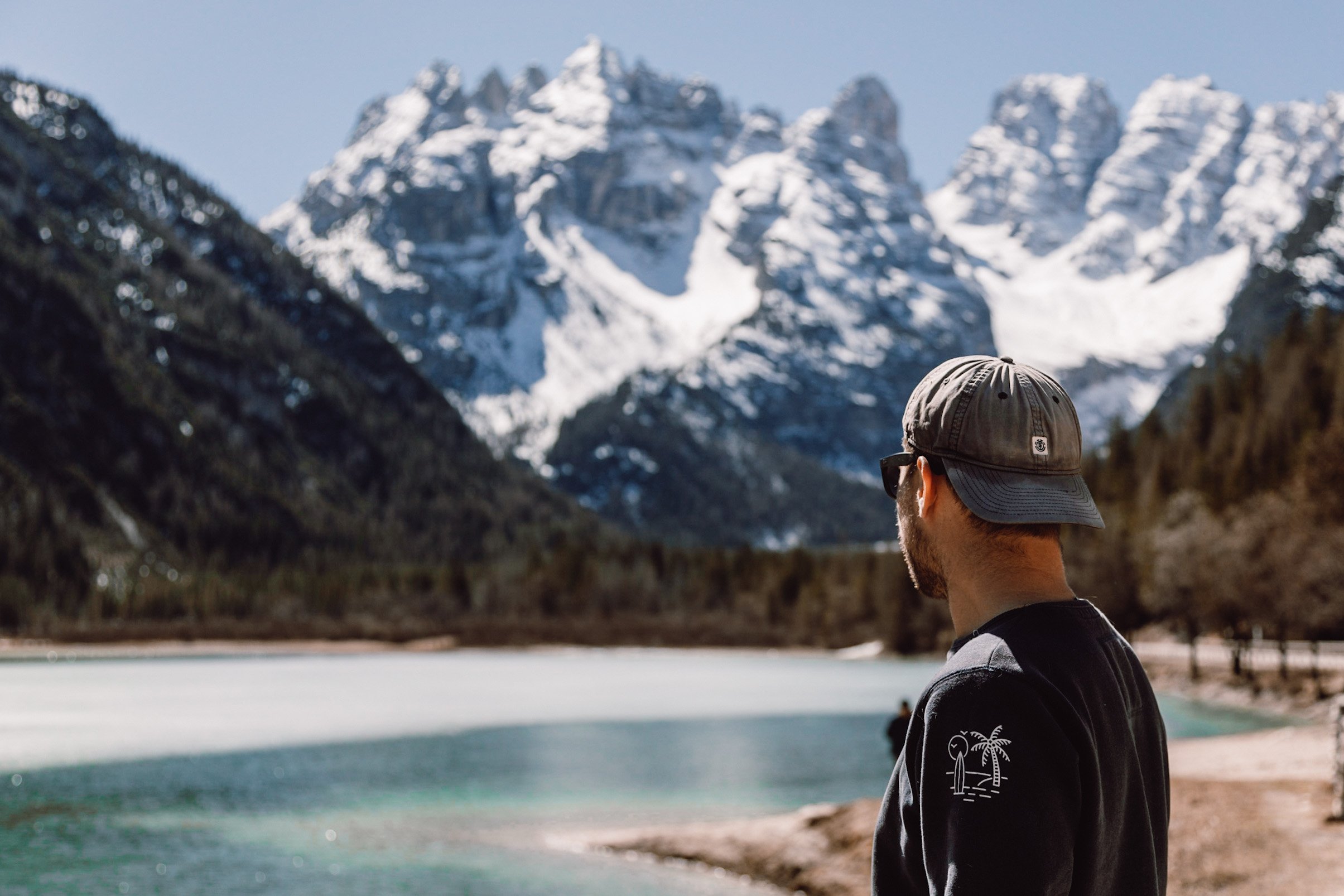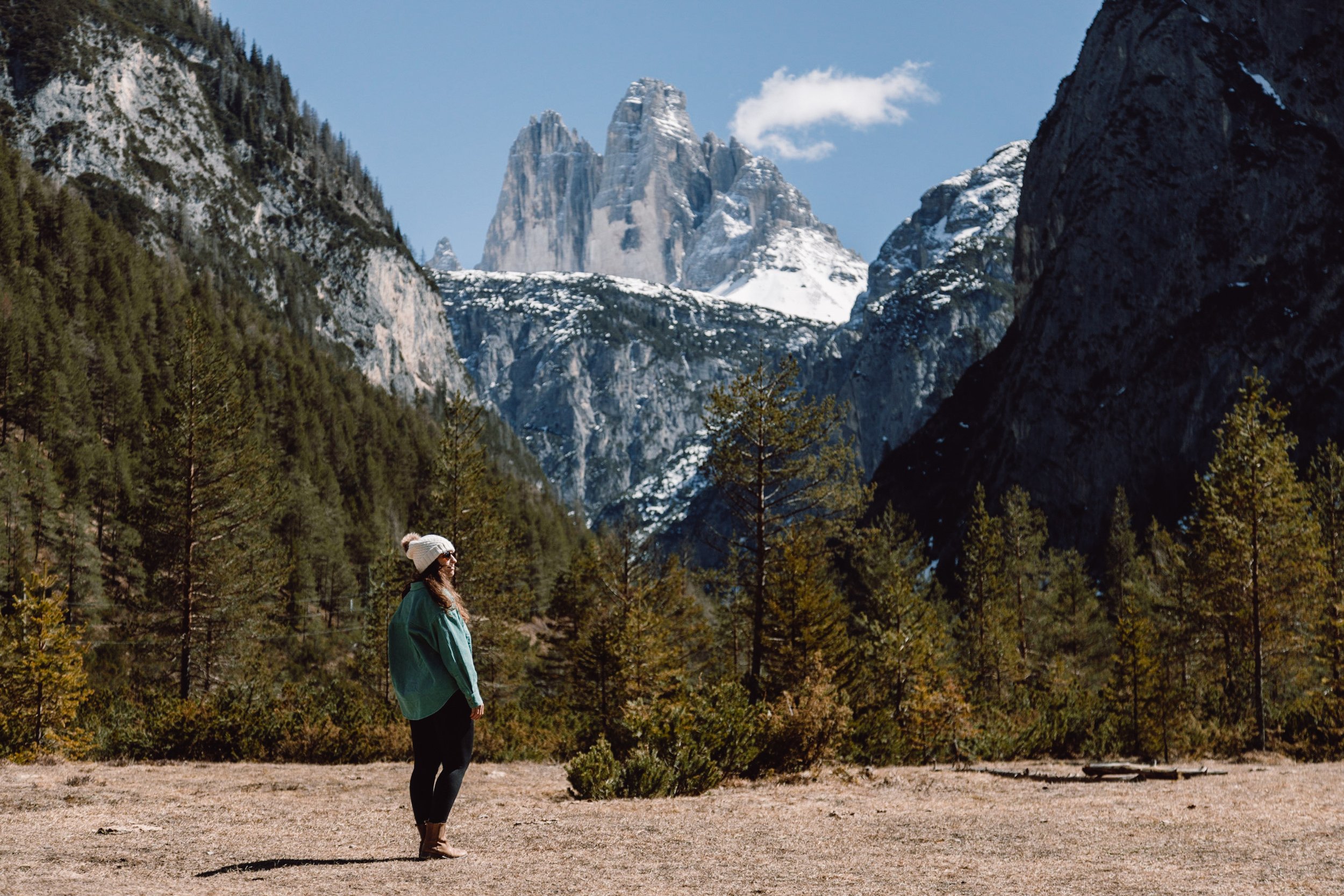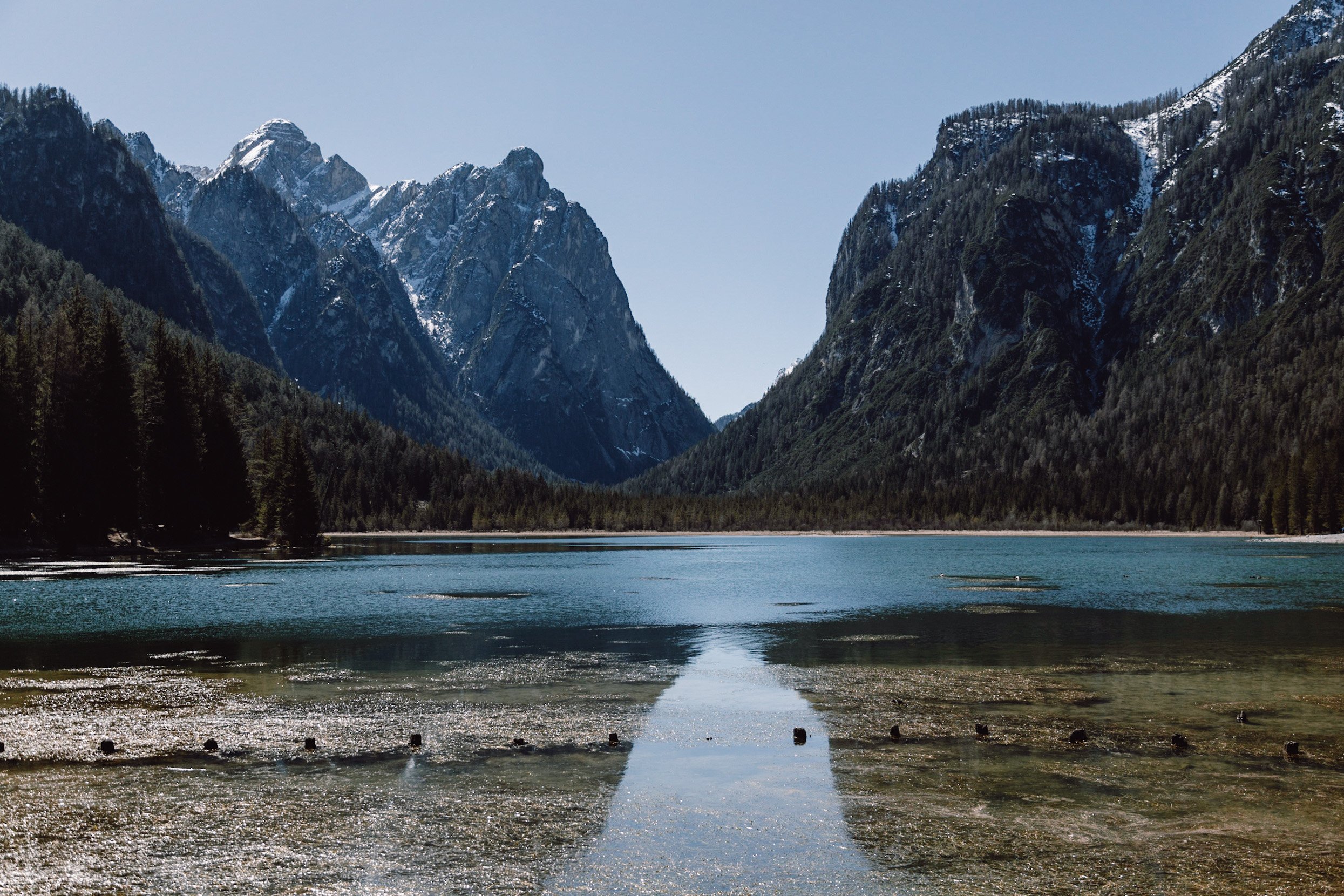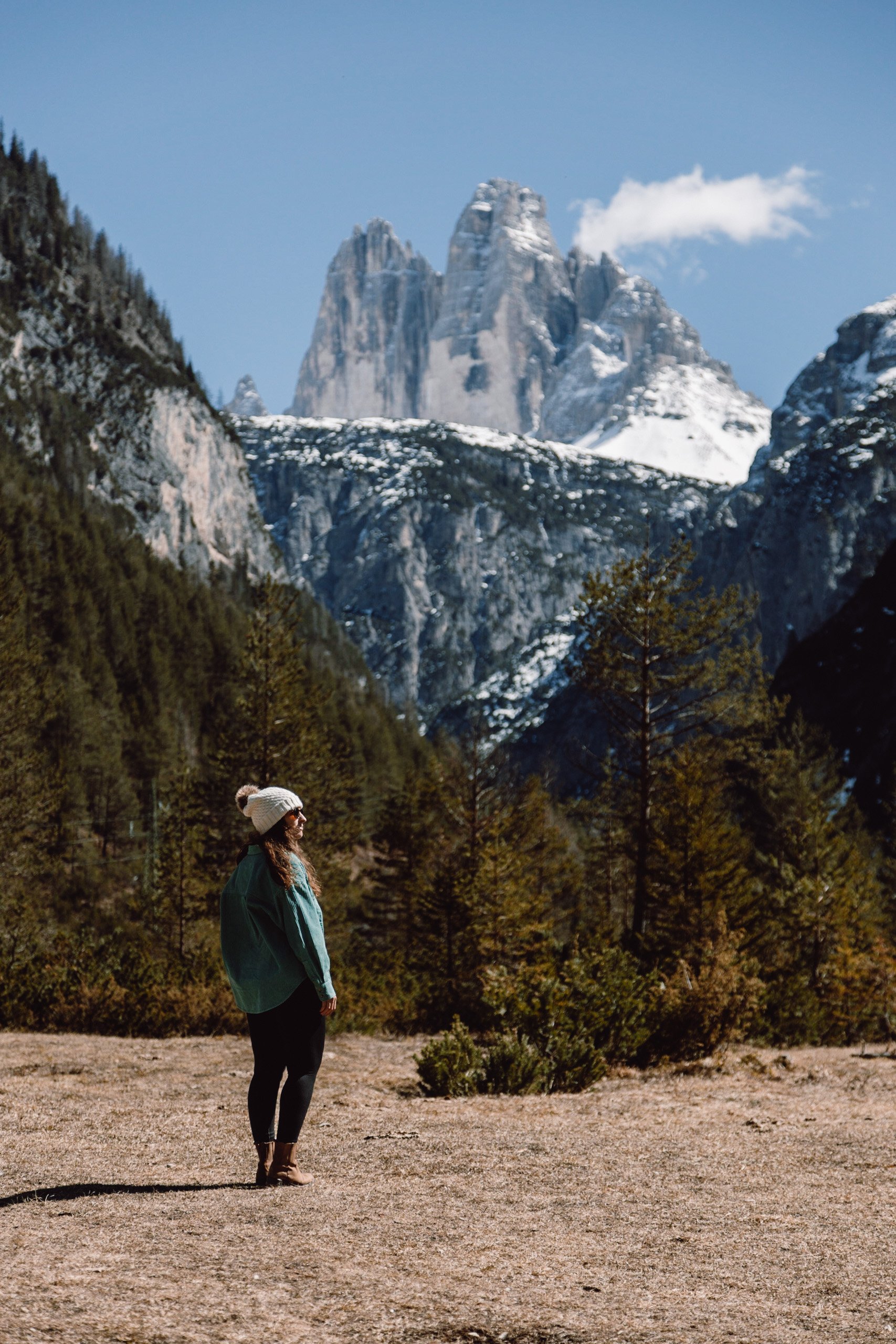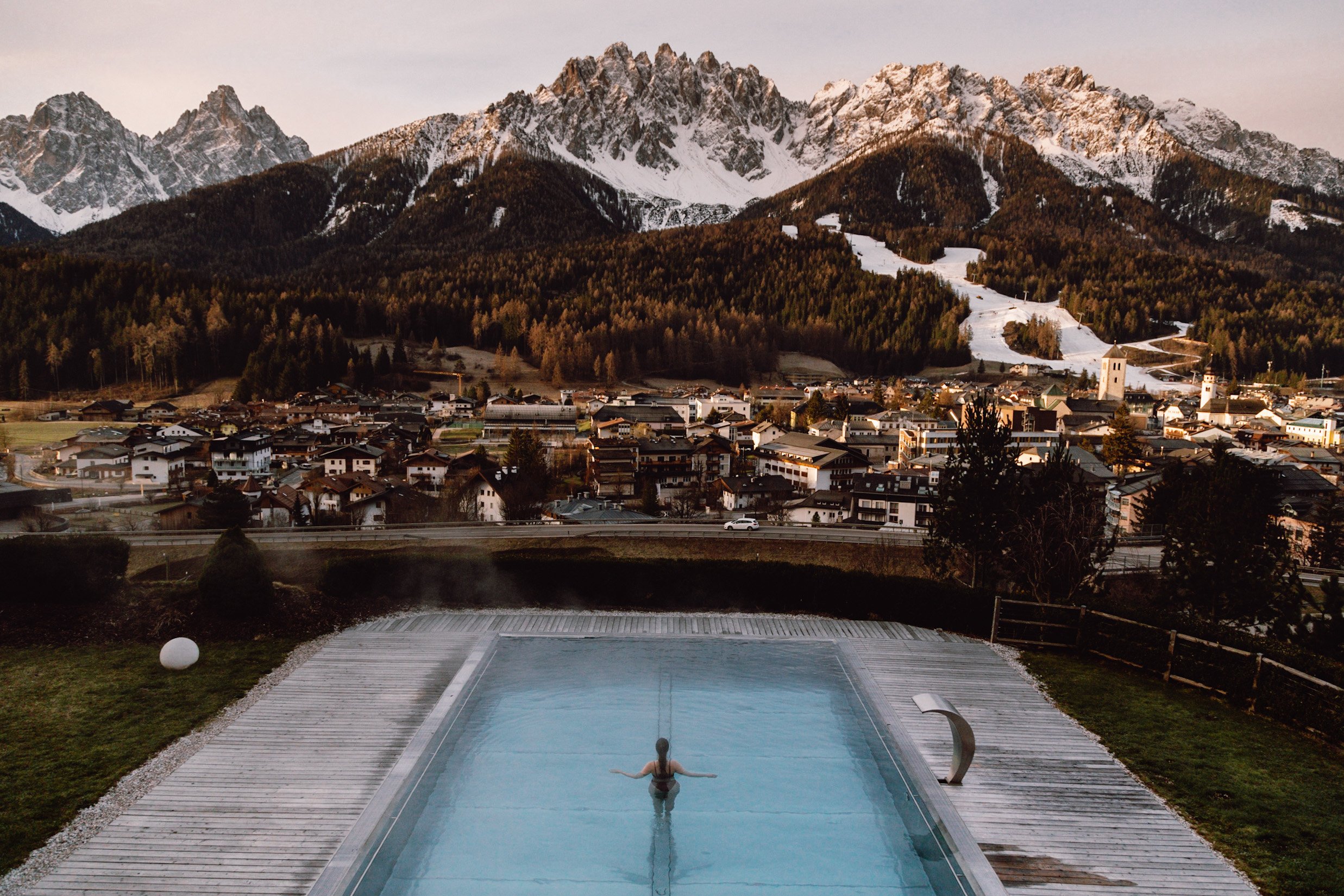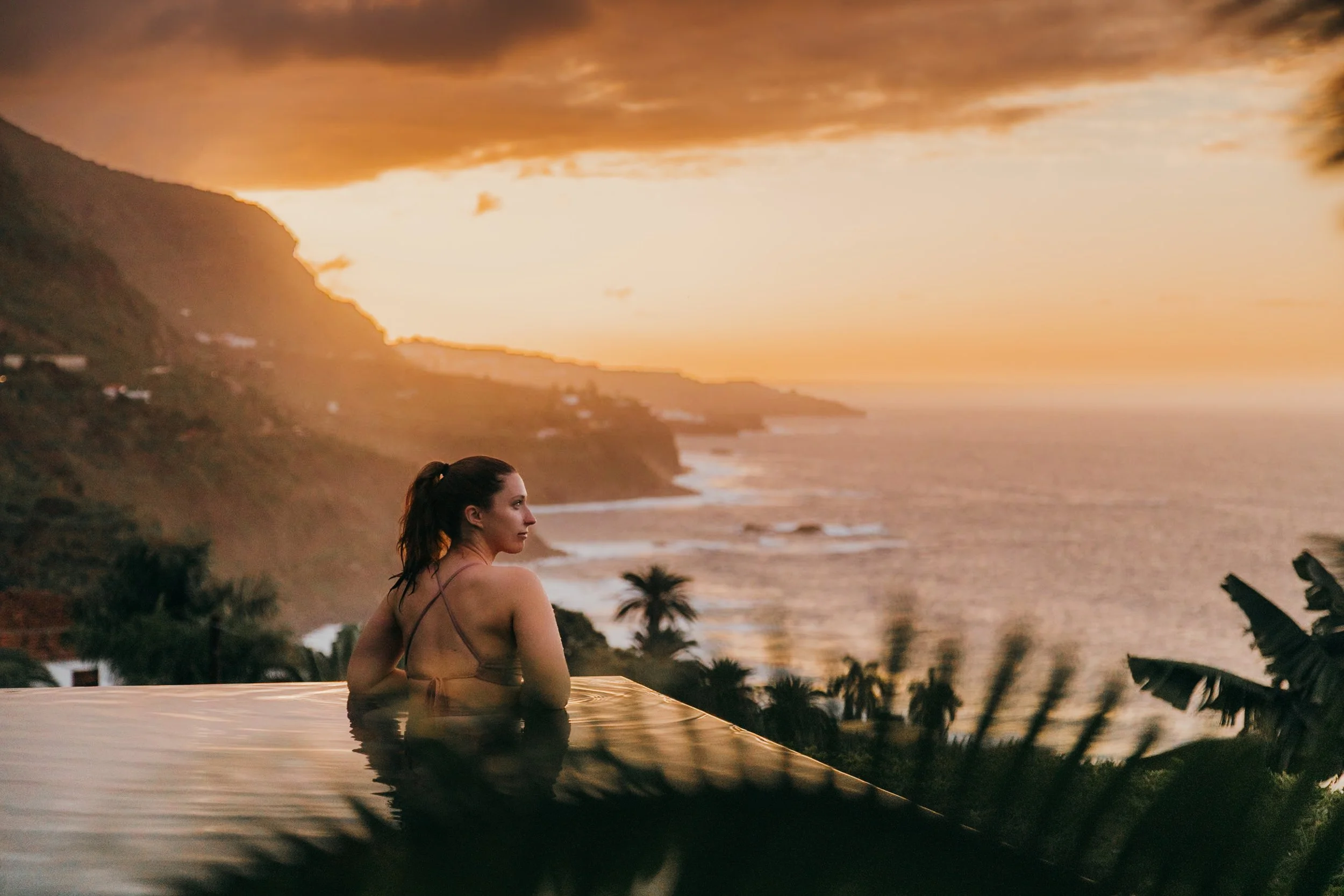This post may contain affiliate links, which means if you purchase through these links, we may receive a small commission at no cost to you. Thank you for supporting our website.
The Dolomites - a natural wonder, a pure phenomenon, a place where dreams are made of.
This is an outdoor adventure heaven for hiking, via Ferrata, skiing and road trips. The Dolomite mountains supply endless beauty, fresh mountain air and relaxation for the mind, body and soul.
The region champions eco-conscious practices, showing that nature truly deserves respect and responsible travel is how we can continue to enjoy these places sustainably. Ensure during your stay that you support green businesses such as staying at an energy self-sufficient hotel that puts the environment first.
Jagged pinnacles of rock emerge above the coniferous pines reaching for the sky. These Italian mountains are renowned for their beauty and geological significance, officially recognised with their designation as a UNESCO World Heritage Site.
Perched on the eastern side of the European Alps, the Dolomites are home to a seemingly continuous coniferous forest. These trees from the Dolomites were used to create the wooden pile foundations of nearby Venice.
This guide will share with you to help you make the most of your visit to the Dolomites including all you need to know before planning your trip, whether it’s figuring out how to get here, the best places to see and where to stay - we’ve got you covered!
Read our guide on 7 things you need to know before visiting the Dolomites in April and whether it’s worth planning a trip at that time of year. Set in the foothills of the Dolomites, discover the beautiful village of Lana and taste the incredible food and wine of the region of South Tyrol.
WHERE ARE THE DOLOMITES?
The Dolomites are part of the northern Italian Alps and are within the regions of South Tyrol, Trentino, Belluno, Udine and Pordenone. The gateway to the Dolomites is often referred to as the town of Bolzano, home to the world famous iceman Ötzi. The area of the Dolomites covers a total of 15,942 km² and is close to the Austrian and Swiss border.
WHAT ARE THE DOLOMITES KNOWN FOR?
The Dolomites were declared a UNESCO World Heritage Site in 2009. The area has been recognised for its geological significance and world renowned beauty. Vibrant crystal clear turquoise lakes, pristine nature, abundant wildlife and iconic limestone cliffs are what makes the Dolomites unique.
The dolomitic limestone pinnacles are some of the highest vertical rock walls in the world and the scenery is what you would imagine in a fairytale. The most recognisable massifs are the Tre Cime di Lavaredo, Sexten Dolomites and Cristallo group.
Most places have two or even three names, this is because many locals speak more than one language and are bilingual, more than half speak German, a quarter speak Italian and some still speak Ladin, a local dialect. Most places in the region have more than one name, for example Meran and Merano.
South Tyrol was historically part of Austria, before it was annexed by Italy in WW1. After this change, many places were given Italian or latin derived names and most are now referred to by either name.
This region of northern Italy cherishes Alpine traditions and combines them with a more contemporary and modern feel. The locals across the region are exemplary and eco-conscious to most aspects of their lives with a close connection to nature.
Many restaurants, hotels and businesses support sustainable practices including farm to table menus featuring local products and hotels championing self-sufficiency.
Discover delicious cuisine inspired from Alpine and Mediterranean influences from schlutzkrapfen (a semi-circle stuffed pasta) to South Tyrolean dumplings (a way of using leftover stale bread).
WHEN IS THE BEST TIME TO VISIT THE DOLOMITES?
Typically, the majority of hotels are open from the beginning of December until early April (ski season) and then reopen in June until late October (summer season). The most popular time to visit the Dolomites is when the main summer season starts in mid June to August and this is when most well-known sites will be particularly busy.
If you’re looking for less crowds, then one of the best times to visit the Dolomites is from September to mid October. This is the shoulder season in the Dolomites where you’ll be able to easily find accommodation and enjoy the beautiful larch trees that transform into a golden spectacle later in the season.
It is possible to visit during April and May, however many hotels and cable cars are shut during these months as many take a break which can limit your options. Read our guide on whether it’s worth visiting the Dolomites in April.
HOW TO GET TO THE DOLOMITES?
BY CAR
From France
We drove our campervan to the Dolomites from France through the Mont Blanc tunnel from Chamonix, stopping at Lake Garda on the way to the Dolomites. The Mont Blanc tunnel is expensive and costs €68.10 for a one-way ticket for a campervan, €51.50 for a car and €34.10 for a motorbike in 2023. Make sure to check for opening times for the Mont Blanc tunnel which will be closed for maintenance from September to December.
There are several toll roads in Italy after the Mont Blanc tunnel but the cost is much less than French toll roads. The total journey time from the Mont Blanc tunnel is 5 hours 20 minutes, passing by Milan.
From Austria
Innsbruck International Airport is one of the closest and largest airports to the Dolomites with options to rent a car from the airport and drive across the border. However, if you decide to do this you may be faced with cross-border car hire charges which cover extra insurance you will need for driving in another country.
From Italy
If you are driving from the south, either from Venice, Bologna or Verona you will take the A22 motorway that passes Lake Garda and heads north past Trento and Bolzano/Bozen. Tolls are charged along this route.
Check out our 2 week Italian road trip itinerary for the best places to see around Lake Garda, South Tyrol and the Dolomites. *coming soon
BY PLANE
The nearest international airport is Innsbruck in Austria and Venice International Airport in Italy. Smaller nearby airports include Verona or Bologna which have limited airlines that serve them.
Bolzano and Cortina d’Ampezzo are known as the two main gateways to the Dolomites. Most public transport routes are linked to these destinations from the nearest airports. From Innsbruck, the journey by car takes around 2 hours to Bolzano by car. If you decide to fly into Venice and hire a car, the journey to Bolzano takes 3 hours. Milan International Airport is another option, where the drive takes 3 hours 30 minutes to Bolzano.
BY TRAIN
Train travel across the region of the Dolomites is well connected to major nearby cities making it an ideal way to get to where you’re staying. From Innsbruck, there are trains direct to Bolzano or with a change in Brenner which takes just over 2 hours and to Cortina d’Ampezzo 3 hours 30 minutes with 3 changes. From Milan airport, there are train connections to Bolzano which will take over 4 hours in total with 2 changes.
BY BUS
If you have arrived from Venice airport, there is the option to book a Flixbus direct to Cortina d’Ampezzo which takes just over 2 hours. The journey from Venice airport to Bolzano has more changes and takes just over 3 hours.
There are direct shuttle buses from Milan Malpensa airport to Bolzano (prices start from €16 one way) and from Verona to Bolzano (prices start from €7 one way), make sure to book your tickets in advance online at Flixbus.
Flixbus travels from most European countries (Germany, Austria etc) and stops at Merano/Meran, Lana, San Candido/Innichen to name a few places in South Tyrol.
The Merano Land Express bus from Munich Germany to Merano runs every Wednesday and Saturday from mid March to November. From Merano there is a connecting service to your accommodation. If you are travelling from Switzerland, catch the South Tyrol express which runs every Saturday from March to October to Merano. Regular buses run between Merano and Lana, check the times to ensure you are able to catch the last bus if arriving late in the evening.
There are airport express shuttles from Venice to Cortina d’Ampezzo known as the Cortina Express service and is a direct bus service that saves the hassle of changing trains or local buses and is an affordable option (prices start from €10 for one way).
BY PRIVATE TRANSFER
Alto Adige/South Tyrol Transfer provides a transfer service that can take you from a FlixBus stop to your accommodation including a return to the bus stop at the end of your trip. Book a shared transfer from train stations or bus stops to your accommodation via the South Tyrol transfer site.
HOW TO GET AROUND THE DOLOMITES?
BY CAR
Travelling by car in the Dolomites is one of the best ways to get around, you’ll have plenty of flexibility to choose places you want to see the most but also come across some hidden spots on route. The roads are well maintained throughout the area and remember to drive on the right hand side of the road as is the case for most of Europe.
Road signs for places will have places shown in German and Italian mostly as most places have two or even three names each. The mountain pass roads are great scenic drives and does not a 4x4 to drive up them, motorhomes, campervans and most cars will drive up them just fine.
The motorways to Bolzano are toll roads which you can pay by card or cash in most cases and once you’re within the Dolomites UNESCO site the only toll road is the road up to rifugio Auronzo/Tre Cime di Lavaredo. The cost of the toll up to Tre Cime di Lavaredo is €30 for a car, €20 for a motorbike and campervans €45.
BY PUBLIC TRANSPORT
The Dolomites has a great public transport network across the valleys and the region encourages environmentally friendly travel by using buses, cable cars and trains. Check the South Tyrol journey planner for timetables, routes and see what transport is available in the area you want to explore.
Many hotels offer a free mobility card when you stay which grants you allows you to use the local buses and some cable cars which is a great incentive to leave you car behind or use mostly public transport during your stay. Hotels in Val Gardena, Val di Funes, Lana and Merano offer a free mobility card, it’s worth checking with your hotel whether this is offered.
Is Over tourism a problem in the dolomites?
The Dolomites is a place on many people’s bucket list for a reason, they’re pretty special. Unfortunately, this popularity has come at a price and the destination of dreams has suffered from over tourism in recent years.
The region welcomed over 34 million overnight stays in 2022 and has now introduced a cap on the number of visitors who can stay overnight. New accommodation is only permitted when replacing an existing place to not compete with local housing needs.
Other sustainable tourism measures include the requirement of reserving parking at popular spots (Lago di Braies and Seisler Alm). This is only during the peak visiting season (July to early September) with the aim to reduce the amount of vehicles visiting these areas, promoting the use of public transport and allowing those who visit to enjoy the experience without overcrowding.
How to be a responsible traveller whilst visiting the Dolomites?
As travellers, we all have a responsibility to be aware and have respect for the places we visit. Travel has an impact on the destinations we visit and learning how to be the best responsible traveller is key to the sustainable future of travel. Being a responsible traveller whilst visiting the Dolomites is essential to everyone who is lucky enough to experience such a special place.
When you visit the Dolomites, it is important to respect the locals by parking considerately, not trespassing private property, flying drones in permitted areas, keep to footpaths and do not remove any wildflowers or any fauna.
Stay to paths and be careful not to trample wildflowers and don’t take any flora or fauna with you as souvenirs. Be respectful of your surroundings, wildlife are sensitive to noise pollution. Stay at an eco-friendly hotel and eat at locally sourced farm to table restaurants and cafés.
Swimming in most lakes are allowed, however some lakes do not allow swimming due to their fragile ecosystem and to reduce the disturbance of wildlife. Lago di Sorapsis and Karasee lake are some of those that restrict swimming. If you’re looking to swim in a lake in the Dolomites it’s worth checking out these dedicated bathing areas. Alpine lakes are very cold so be prepared for a refreshing dip!
WHAT TO TAKE WITH YOU TO THE DOLOMITES?
The Dolomites is primarily an outdoor, hiking and climbing destination offering an abundance of trails, natural wonders and incredible scenery.
The mountain weather is unpredictable, one minute you’re basking in warm sunlight and the next you’re taking shelter from a passing storm. If you plan to visit the mountains you need to be prepared for all weather conditions you could experience and there can still be snow in May and June in some areas.
Even if you visit in late spring and summer months, the weather can get chilly in the mornings and evenings. We’ve put together a list of essentials that you should consider taking with you on your trip to the Dolomites.
Comfortable (worn in) Hiking shoes
Hiking poles (optional) - if you plan on doing lots of hiking these are great for downhill sections
Waterproof/windbreaker
Cosy jumper/fleece
Reusable water bottle
Sunglasses
Suncream
First aid kit
Warm hat
Gloves
Down jacket
Driving a car in winter months (mid November to mid April) - you must either have snow tyres or snow chains/snow socks
WHAT ARE THE BEST THINGS TO SEE AND DO IN the Dolomites?
San Candido
San Candido is a great location to base yourself from and stay at the Naturehotel Leitlhof, an eco-conscious luxury hotel with incredible views of the Sexten Dolomites mountain range. There are many hiking options from San Candido where paths take you across gentle rolling green meadows, passing family-owned farms and offering amazing views of the iconic Three peaks (Drei Zinnen/Tre Cime).
Lake Misurina
At 1,754 metres above sea level, Lake Misurina is a picture perfect scene. A hotel is perched on the waters edge, framed by the spectacular mountains behind. Lake Misurina is straight out of a Wes Anderson movie, be prepared for your jaw to drop when you encounter its beauty in person. There is parking next to the lake and in the village. In the winter, Lake Misurina becomes a frozen masterpiece, where you can ice skate across the thick ice.
Lago di Braies/Pragser Wildsee
One of the more popular locations in the Dolomites, Lago di Braies is a natural beauty. Limestone cliffs perfectly frame the lake and boathouse. Take a walk around the lake to discover peace and serenity from this spot, the echoes of nature can be heard bouncing off the sheer limestone cliffs.
Parking reservations are required from 10th July till 10th September and driving is restricted from 9:30 am until 4pm. Reservations are not required outside these periods and driving is permitted before 9:30 am and after 4pm during July and September.
Book your tickets online from June which will give you access to the lake. Alternatively catch a local bus from Dobbiaco (Toblach) to Lago di Braes via line 442 which is a direct route (online booking is required during peak season July - September).
Puez-Odle Nature Park
The Puez-Odle Nature park is home to the majestic Odle/Geisler mountain group in South Tyrol. This nature park features numerous hikes which cover low valley routes. We accessed the Puez-Odle Nature Park from Val di Funes where you’ll find a large car park which has a restaurant, tourism information and also has electric bike charging station.
Toblacher See/Lago di Dobbiaco
Lago di Dobbiaco also known as Toblacher See is a peaceful setting, a beautiful turquoise lake surrounded by pine trees. Take the circular trail around the lake to see its beauty from different perspectives and observe the birds that regularly visit this special spot.
Tre Cime NaturAL Park
The Tre Cime Natural Park was establish in 1981 and is well known for the Tre Cime di Lavaredo also called Drei Zinnen which is the three iconic peaks that are one of the most famous scenes from the Dolomites.
Where to Stay in the Dolomites?
Naturhotel Leitlhof
Leitlhof hotel champions a sustainable approach to hospitality by being completely self-sufficient in producing their own energy at the hotel reducing their guests carbon footprint. The hotel also features a beautiful scenic outdoor pool, spa, cosy aesthetic and delicious locally sourced food.



